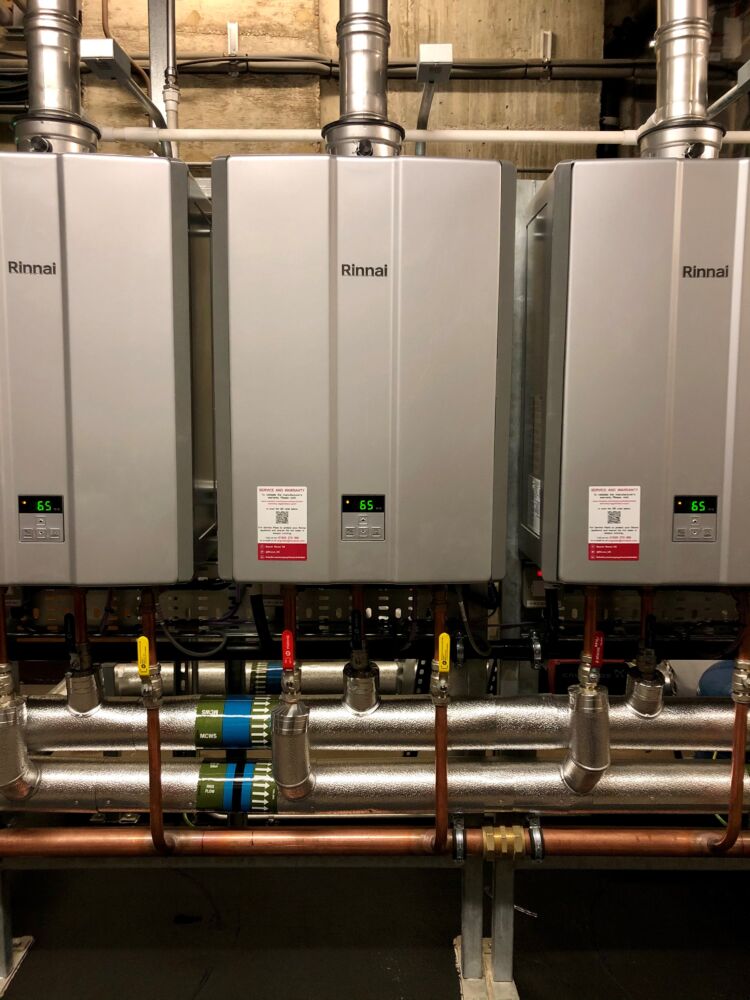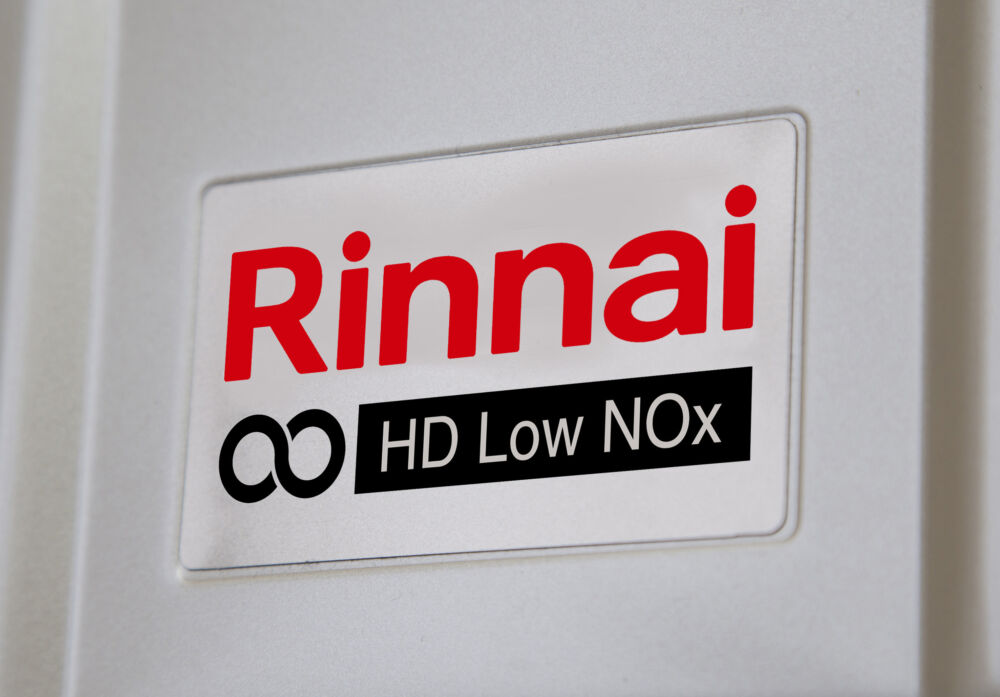
Rinnai’s Chris Goggin looks at some of the reasons why the UK media is favouring some energy vectors over others in the current era of transition to Decarbonisation and NetZero
Turbulent times produce added information which turns out to be not wholly true but more of a disguised agenda. We are all aware of the use and misuse of ‘Fake’ news and all of its companions. But we need to unite in our efforts to achieve decarbonisation as soon as it is pragmatic and realistic. UK consumers – plus contractors, consultants and all big commercial sites – should be aware that a strong international preference towards hydrogen is evident by the sheer level of international investment and that it is under reported by mainstream media outlets.
Multiple major economies, distribution hubs and global companies are working towards future green hydrogen usage with grey and blue hydrogen being used as decarbonizing stepping stones.
However, according to various UK mainline media outlets, heat pumps are the only viable tool of decarbonisation. Although heat pumps will undeniably play a vital role in cutting harmful emissions, alternative avenues towards climate conscious energy usage are being overlooked by UK mainstream media outlets.
Instead of truly reporting on all feasible alternatives, mainstream media prefers to push decarbonizing technology that appears to be more financially compatible with their respective socio-economic audiences.
Extraordinarily little is mentioned of hydrogen and when cited the subject is often treated with disparagement. A lack of manufacturing capacity, safety issues and consumer cost are the three main motivations behind this limited reportage. If this is the case what is being done to amend these concerns within the emerging hydrogen industry?
At present there are three prominent variations of hydrogen that are being manufactured: grey, blue and green. This colour scheme correlates to production methods which themselves infer to the amount of carbon releases for each are responsible.
96% of currently globally produced hydrogen is generated through fossil fuels. The easiest form of hydrogen to manufacture is grey hydrogen which is produced via a process called SMR – steam methane reforming. Heat and pressure are applied in natural gas which then converts its methane properties into hydrogen and carbon dioxide.

Blue hydrogen occurs when carbon collected during steam reforming is stored underground. This process is called carbon capture and storage (CCUS). In a generous light this variation of hydrogen can be labelled “carbon neutral” however a more accurate description would be “low carbon” as up to 10% – 20% of carbon, can be potentially released into the atmosphere.
Recent technological advancements in this area are responsible for CCUS potentially entering a new era. New hydrogen manufacturing plants will employ alternative technology Autothermal Reforming (ATR) which allows for capture of up to 96% – 97% of all emissions.
Carbon capture and storage is an area the UK government is keen to accelerate. Blue hydrogen projects that require funding can access government provided finances through the £240 million NetZero Hydrogen Fund (NZHF). Additionally, a Carbon Capture Storage Infrastructure Fund (CIF) was first announced during the Budget, March 2020. Allocation of £1 billion of state funding for the CIF was confirmed at the November 2020 spending review.
Major international companies such as Shell are currently involved in multiple CCUS endeavours more notably in Canada, Norway and Australia. Shell is a partner in the Australian Gorgon Liquefied Natural Gas Project. Once completed this will be the biggest CCUS operation in the world and will be capable of capturing up to four million tonnes of CO2 a year.
Shell’s Quest project in Canada is a fully operational CCUS facility. The governments of Alberta and Canada have invested $745 million and $120 million respectively. Shell hopes that the positive results yielded from this project will further encourage other CCUS technology to be implemented internationally.
Green hydrogen is 100% carbon neutral and therefore the preferred fuel of the future. Green hydrogen is produced when renewable resources like wind, hydro or solar power are used to power an electrolyzer that sits in a huge drum of water. This process is called electrolysis, which extrapolates hydrogen from oxygen atoms in water. The only excess substance remaining is water zapped of its hydrogen content.
Because no fossil fuels are used in the creation of green hydrogen, carbon neutrality is completely feasible. Individual sectors such as transport and home heating are aware of green hydrogen’s climate credentials and are keen to begin utilizing the alternative fuel source.
What is holding back green hydrogen usage then? Producing green hydrogen is dependent on earth’s natural resources. Some seasons yield more positive results than others. Then there is cost. At present green hydrogen is not cost competitive with grey hydrogen which is easier to manufacture. Six percent of global natural gas consumption can be traced to grey hydrogen production.
Next generation electrolyzers are being designed with greater capacity for efficiency and the cost of renewables are declining. In coming years, with further advancements in these areas green hydrogen will become commercially abundant and viable.
In making this possible an EU funding spree hopes to create a European value chain in green hydrogen electrolyzers. Multiple funding projects will be cleared as part of the one billion Euros European Green Deal. It is believed that 25 – 30 million Euros will substantiate each individual project. Every venture must demonstrate a sizable energy and decarbonizing contribution to either the industrial, transport or domestic heating sector.
Advancing electrolyzer and ATR – CCUS technology will see the cost of blue and green hydrogen decrease, whilst manufacturing capacity and demand will increase. Grey hydrogen production and therefore any need for fossil fuel consumption will gradually shrivel away.
Aspects of health and safety are another issue which restricts hydrogen’s appeal in UK media outlets.
Hydrogen has been undergoing testing and re-testing for many years for commercial opportunities to become apparent. FutureGrid is a project set up to create a demonstrative gas transmission network which allows for a wide range of safety tests to be carried out and analysed.
Once constructed, FutureGrid’s transmission network will be capable of facilitating a range of tests on 20% hydrogen gas blends to 100% pure hydrogen. Analysis will focus on gas behaviour and interaction within the constructed infrastructure.
All testing will be adjudicated by the Health and Safety Executive who will decide on the feasibility of domestic and commercial hydrogen consumption. Construction will potentially begin on the £10 million project in 2021 with tests being carried out later in 2022.
A vast amount of funding and proactive thought is being placed into the advancement of hydrogen. Work is underway on producing next generation electrolyzers and CCUS technology that will help push hydrogen to the forefront of international energy options. Updated technology will assist in increasing manufacturing capacity whilst driving bulk prices of blue and green hydrogen down.
Major UK media outlets however fail to deliver this information and instead focus on either alarmist editorials designed to shock, or present only one technological decarbonizing option.
The entire world has set its sights on future hydrogen usage. Why we hear next to nothing is due to media bias that stems from potential advertising revenue aimed at a target demographic.
UK end users need to know that hydrogen is a global target not a conceptual ambition. In the coming years multiple decarbonizing technology options will be available. The only reason this isn’t widely reported is down to current personalized media agendas held by mainstream media outlets.
For more information on the RINNAI product range visit

